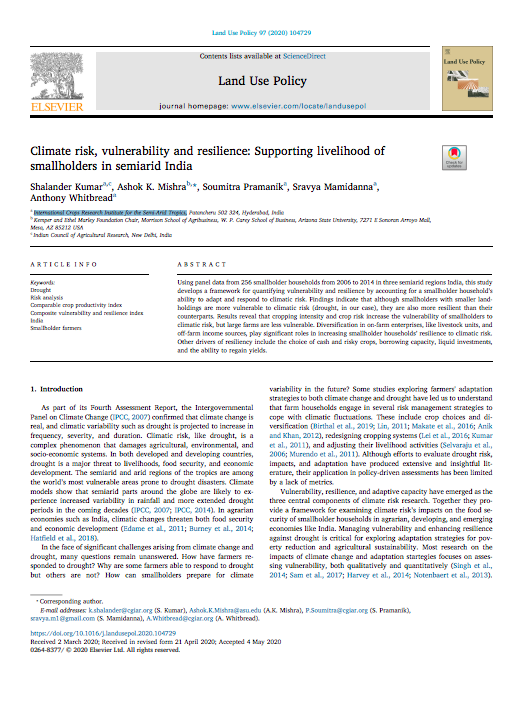Climate risk, vulnerability and resilience: Supporting livelihood of smallholders in semiarid India

ABSTRACT
Using panel data from 256 smallholder households from 2006 to 2014 in three semiarid regions India, this study develops a framework for quantifying vulnerability and resilience by accounting for a smallholder household’s ability to adapt and respond to climatic risk. Findings indicate that although smallholders with smaller landholdings are more vulnerable to climatic risk (drought, in our case), they are also more resilient than their counterparts. Results reveal that cropping intensity and crop risk increase the vulnerability of smallholders to climatic risk, but large farms are less vulnerable. Diversification in on-farm enterprises, like livestock units, and off-farm income sources, play significant roles in increasing smallholder households’ resilience to climatic risk. Other drivers of resiliency include the choice of cash and risky crops, borrowing capacity, liquid investments, and the ability to regain yields.